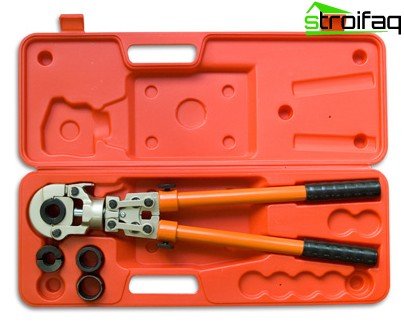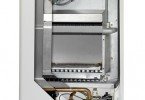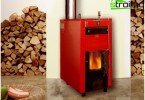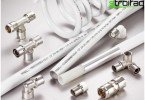Metal-plastic fittings and pipes for heating
For many years, steel pipes were used to install an intra-house heating system, which was associated with a number of inconveniences. Troubles began in the process of installing them. Firstly, when working with such pipes, it is impossible to do without a professional welder. So if you are a representative of another profession, to build a heating system yourself – it will not work. It was necessary to do this until the moment when the room was redecorated. If the pipes failed during operation, the use of welding to replace them led to the need to glue the wallpaper, and often change the flooring. Fortunately, metal pipes have replaced metal pipes, which have a lot of undeniable advantages. First of all, this is of course ease of installation – fittings for metal pipes allow you to assemble the heating system yourself. No special skills or bulky expensive tool are needed for this..
Content
- Metal-plastic pipes for heating
- Hard to argue with virtues
- A minor list of flaws
- Metal pipe construction
- Specifications Limitations
Metal-plastic pipes for heating
Hard to argue with virtues
These pipes are distinguished by excellent performance:
- Plastic is not subject to corrosion.
- A very smooth inner surface prevents salt deposits inside the pipe. So, it does not “overgrow” during operation.
- To install the heating system, you can use pipes of significantly smaller diameter, which not only saves, but also significantly improves the appearance of the room.
- To assemble a metal-plastic pipeline is quite simple, it is quite possible for any home master to do it yourself.
- Durability. Subject to operating conditions, such a pipe will last more than 50 years.
- The light weight of the structure will significantly reduce the load on the foundation of the building.
- Ease of cutting with minimal waste. Pipes are supplied with a large meter in the bays, which means that with the right approach you can do without scrap.
- Easy to repair. If any malfunctions in the system are detected, it is enough to “dump” water and replace one of the pipe sections. Thanks to the ease of installation, this can be done without harming the surrounding interior..
- Plastic is not static, which means it does not conduct stray currents.
- Such pipes do not have linear expansion, which makes it easy to hide them in a wall or concrete screed.
- Excellent sound absorption. Such a heating system does not require the installation of additional sound insulation.
A minor list of flaws
It is worth noting that, along with the advantages, this material has several disadvantages..
- Fittings for plastic pipes have a slightly narrower section, which leads to a decrease in cross-country.
- The high cost of fittings makes the installation of a heating system expensive.
- Defrost resistance. If, for some reason, the heating equipment fails for a long period, the water in the system will freeze, which will inevitably lead to pipe rupture or deformation of the fittings.
Metal pipe construction
The metal-plastic pipe consists of several layers.
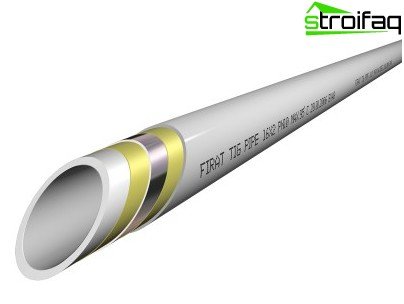
The structure of the metal-plastic pipe
- Inside is a layer of special plastic made from a special modification of polyethylene – PEX, which has increased strength. This material does not oxidize, and due to the surface roughness of only 0.004 mm, it does not “collect” salt. The possibility of its use in heating systems is due to the significant heat resistance of the material, it does not lose its qualities even at a temperature of + 95 ° C.
- The next layer is glue. A special composition with very high adhesion to both aluminum and plastic provides a durable, ductile bond.
- In the very center of the pipe there is a layer of aluminum, made by special technology, which allows the metal to acquire special ductility and at the same time maintain strength. The thickness of this layer is 0.2 – 0.3 mm.
- Next comes another layer of glue and an outer layer of plastic. The metal on both sides is protected by polyethylene, which means that it does not experience negative environmental impact.
Specifications Limitations
Starting the installation of heating from metal-plastic pipes, pay particular attention to their technical characteristics, or rather, to the conformity of these characteristics to the pipeline requirements prescribed in the instructions for your boiler.
- Maximum coolant temperature – 95 ° C
- Permissible operating pressure at maximum temperature – 10 bar
- The maximum temperature admissible for a short period is 130 ° С
Fittings: types, rules for their installation
To connect individual sections of pipes, so-called fittings are used. Translated from English, this word means – to fit, collect. They are used in places where it is necessary to bend the pipe at a sufficiently large angle, branch or change to a different diameter. Fittings also include valves.
If the diameters of the pipes to be connected are equal, the fitting is called straight, if the diameter is increased or decreased, it is transitional. Most often they are made of brass, less often of bronze or plastic. According to the method of attachment, crimp and press fittings are distinguished.
Compression fittings for metal pipes
The fitting includes:
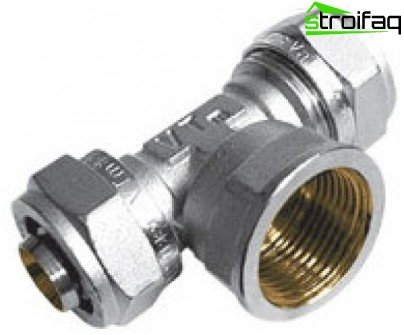
Crimp fittings for mounting plastic pipes
- Housing – must be equipped with a dielectric gasket at the end connection with the pipe. This is to prevent the aluminum layer of the pipe from contacting the fitting metal..
- O-rings.
- Nut.
To install the pipeline using such fittings, you will need:
- Pipe calibrator.
- Bevel picker.
- Plastic pipe shears or hacksaw.
- Spanners.
Installation process
- Cut the pipe to the desired length with special scissors or a hacksaw.
- We clean the cut from irregularities and burrs and cut the inner chamfer with a chamfer.
- Using the calibrator, we give the hole a round shape (when using scissors, the pipe could flatten a little).
- We put a crimp ring on the pipe. We put the fitting on the pipe so as not to damage the gaskets. Interesting! In order to facilitate the fitting fit process, moisten the pipe in the place of attachment with water.
- Now you need to tighten the nut on the body with wrenches. This must be done with some effort, but so that the nut does not break.
Important! Be careful not to squeeze the crimp ring out when tightening the nut. In this case, the fitting must be replaced immediately..
The resulting compound will be very strong and reliable. But from time to time, you may need to tighten it. This fact makes it impossible to install plastic pipes on crimp fittings inside the wall..
Press fittings for plastic pipes
Installation of the pipeline using such fittings is also quite simple, but requires a special tool – a hydraulic or manual press.
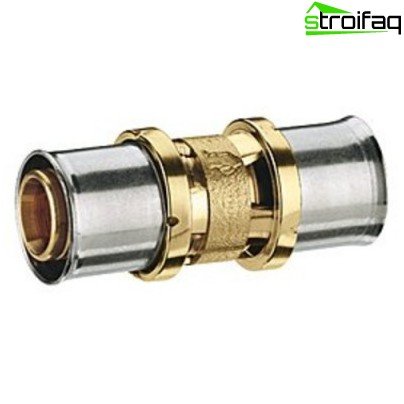
Press fittings for the installation of plastic pipes
Tools required:
- Shears for plastic pipes.
- Bevel picker.
- Pipe calibrator.
- Manual or hydraulic press.
Manual Radial Press Pliers
Operating procedure
- Cut pipe at right angles.
- Clear cut and chamfer.
- Put on a stainless steel sleeve at the end of the pipe (part of the fitting).
- Insert the fitting body into the pipe.
- Grasp the sleeve with the press clamp and push the handles all the way.
That’s all – the connection is ready. If everything is done correctly, such a connection will last about 50 years. If you plan to hide heating pipes in the wall, it is necessary to use press fittings.
The choice of installation of metal-plastic pipes depends on many factors: the location of the pipeline, the technical characteristics of the boiler, and simply your desire. Only the fact that a correctly assembled metal-plastic heating system will last several decades without failures is not questioned..


